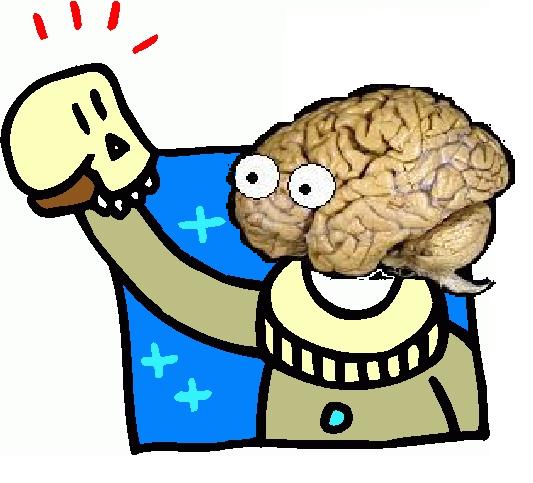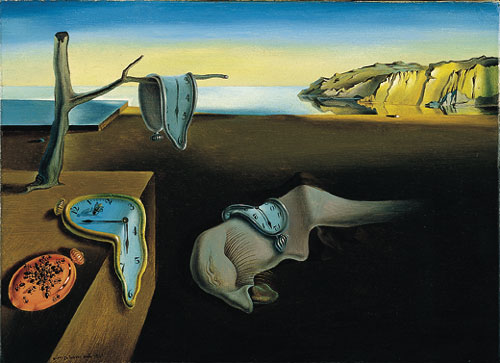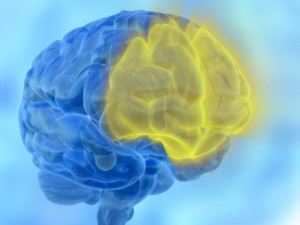Tagged: memory
Memory 101: Understanding How We Remember
Do you ever wonder how you are able to remember the name of your third-grade teacher, or the skills you use to ride a bike, or even lines from your favorite movie? Well, if you haven’t then you should, because it takes the workings of many regions of our brain to combine all the different aspects of one memory into a cohesive unit.
The first step in this complex process deals with our perceptions and senses. Think about the last time you visited the beach. Recall the sound of the wind and birds, the sight of the sun and ocean, the smell of the salt water and the feeling of the hot sand and shells underfoot. Your brain merges all of these different perceptions together, crafting them into the “memory” that we are able to recall.
All of these separate sensations travel to the part of our brain called the hippocampus. Along with the frontal cortex, the hippocampus plays a huge part in our memory system. These two regions decide what is worth remembering and then store this information throughout the brain.
Perception starts the processes leading up to encoding and storage, which takes place through our brains’ synapses (or the gaps between neurons). Through these synapses, neurons are able to electrically and chemically transmit information between themselves. When an electric pulse is fired across the gap, it triggers the release of chemical messengers called neurotransmitters.

Here is a clear view of communication between neurons through the releasing of neurotransmitters over the synapse.
From there, the spread of information begins. The neurotransmitters diffuse to neighboring cells and attach to them, forming thousands of links. All of these cells process and organize the information as a network. Similar areas of information are connected and are constantly being reorganized as our brain processes more and more.
Changes are reinforced with use. So let’s say you are learning to play a sport. The more you practice, the stronger the rewiring and connections will become, thus allowing the brain to do less work as the initiation of pulses becomes easier with repetitive firing. This is how you get better at a certain task and are able to perform at a higher level without making as many mistakes. But again, because our brain never stops the process of input and output, practice needs to be constant in order to promote strong information retention.
Knowing all of this, it probably comes as no surprise that the most basic function for ensuring proper memory encoding is to pay specific attention to what you are doing. We are exposed to thousands of things in very short amounts of time, so the majority of it is ignored. If we pay more attention to select, specific bits of information, we’ll have a higher potential to remember certain things (try it out for yourself in lecture).
Since the actual process has been discussed, we’ll go into greater detail about the types of memory we have and how they differ. There are three basic memory types that act as a filter systems for what we find important. This is based on what we need to know and for how long we need to know it.
The first is sensory memory, which is basically ultra-short-term memory. It is based off of input from the five senses and usually lasts a few seconds or so. An example would be looking at a car that passes by and remembering what color it was based on that split second intake. The effect is vaguely lingering, and is forgotten almost instantly.
Short-term memory is the next category. People sometimes refer to it as “the brain’s Post-it note”. It has the ability to retain around seven items of information for about less than a minute. Some examples would include telephone numbers or even a sentence that you quickly glance over (such as this one). You have to remember what is being said at the beginning to understand the context. Likewise, numbers are usually better remembered, and have longer staying power in the brain, when split up (800-493-2751 instead of 8004932751 for instance).
Repetition and conscious effort to retain information leads to the transformation of short-term memory into long-term memory. By rehearsing information without interference or disturbances, one is better able to remember things and ingrain them into his/her brain. This is a gradual process, but it proves why studying is important! Unlike the other two memory categories, long-term memory has the ability to retain unlimited amounts of information for a seemingly indefinite amount of time.

This diagram shows a more complex view of the major memory types and their subdivisions.
A piece of information must pass from both sensory and short-term memory to successfully be encoded in long-term memory. Failure to do so generally leads to the phenomenon known as “forgetting”, something that many of us are all too familiar with ironically enough!
To give a common example of long-term encoding and memory retrieval, consider trying to recall where you have put your keys down. First, you must register where you are putting your keys and attention while putting them down so that you can remember later. Accomplishing all of this helps a memory to be stored, retained, and ready for retrieval when necessary.
Forgetting may deal with distraction, or simply just failure to properly retrieve a memory. That being said, it should be noted that there is no predisposition to having a “good” or a “bad” memories. Most people are good at remembering certain things (numbers, procedures and mechanisms for example) better than others (names, phrases, or even entire plays) and vice versa. It all depends on where you are able to focus your interests and your attention.
Hopefully, you will be able to remember some of this so that you can use your understanding of the complexities of the brain and memory encoding to your advantage. After all, your brain does all the hard work for you! Now you just need to pay attention and focus on what you find important and what you want to remember to best suit your own needs.
How Human Memory Works – Discovery Health
Types of Memory – The Human Memory
How Does Human Memory Work? – USATODAY.com
Time to Mix it Up: The Student Guide to Good Study Habits
We’re told to find ourselves a quiet nook, to maintain a schedule, and to tackle one subject at a time. Our parents tell us that naps are a waste of time. And mass media conglomerates encourage us to fill every spare moment with a quick video clip or a two-minute game on our cell phones. But as it turns out, it is time to quit buying into what we’re told creates the optimal environment and habits to learn.
First, forget about holing up at that same seldom-visited spot over the span of time before an exam. Studies have found that students who vary where they study will remember the information better than those who stay in one place. The brain makes associations between what we study and where we study it, so the greater the number of associations, the more enriched the material, and the better entrenched the memory.

Experts advise students never to have a "go-to" study spot; changing locations can help students better learn the information.
Next, throw the one-subject-at-a-time approach out the window. Varying the type of material studied in one session has been shown to leave a deeper impression on the brain than focusing on a single topic at a time.
For example, a recent study in the journal of Applied Cognitive Psychology featured two groups of 4th graders being taught how to calculate the dimensions of a prism. There were four existing problem sets; one subject group was given repeated examples of one type of problem, while the other was given a mix of all four types of problems. A day later the groups were given separate tests on what they had learned, and the 4th graders who had been given the mixed problem sets performed twice as well.
Last but not least, when you have some down time, take the airplane approach: turn off all your electronics and take a nap. This technological age encourages nearly constant multitasking, but multitasking deprives our brains of much-needed rest. A continuous stream of digital input-via cell phones, iPods, computer screens, and televisions- forfeits the time when our minds could better learn and remember information, even form ideas.

Don't be this guy: Overloading your brain might appear to save you time, but in the end it impairs your learning abilities.
A study at UC-San Francisco found that rats do not process new information and transform it into a persistent memory until they are given a break from those new experiences. Thus in order for us to process what we’ve learned and experienced during the day, we need to rest our brains.
Recent studies have shown that sleep not only consolidates what you have already studied, but it also primes the mind for further learning. So an afternoon nap between classes (as long as you set your alarm) can actually be the final element to a perfect study system.
For Reference:
Think You Know How to Study? Think Again- NPR
Digital Devices Deprive Brain of Needed Downtime- The New York Times
Forget What You Know About Good Study Habits- The New York Times
Behavior: Napping Can Prime the Brain for Learning- The New York Times
“Could I ask everyone to please take their seat? The Memory Ensemble will begin momentarily.”

If I told you that a theater company and a medical school collaborated to produce one of the best plays of the year, would you believe me?
Probably not, because this is not the case. However, this unlikely partnership of industries did produce a substantial therapeutic program for people who are currently suffering the cognitive deficits associated with dementia.
Based on the theory of cognitive reserve - or the brain’s resilience to neuropathological damage - it is widely hypothesized that creative and interactive activities, such as painting, singing, and acting, would help patients maintain their cognitive functions for as long as possible.
With this hypothesis and the guidance of the Lookingglass Theater Company, the Feinberg School of Medicine at Northwestern University formed the first-ever "Memory Ensemble." The cast included six elderly patients suffering from early stages of memory loss, a common symptom attributable to various types of dementia.
Quoted as “one of the first-of-its-kind," the directors of this production sought to design a program that would improve the quality of life for these patients by setting up a safe and supportive environment. With the serene scene set, patients were encouraged to express every emotion and/or words associated with their neurological deficits to help them alleviate any pains or questions of uncertainty accompanied by these disorders.
As a part of a seven week pilot study, the ensemble would meet and participate in various cognitive activities, including an impromptu-style of acting that actively engaged the patients both physically and mentally. As a baseline measure, metaphor-based warm-up exercises prompted the patients to choose a color that symbolizes their current emotional state. Prior to their regularly scheduled regime, the patient’s reports ranged from a happy sunny yellow to a melancholy blue. Nevertheless, after a stretching routine, body-sculpting exercises portraying various feelings, and an active discussion of the hardships involved with their disorders, all of the patients were quick to describe their emotional state at the end of the workshop as a happy yellow.
Although these patients verbally reported an improvement in their quality of life within the given time period, it was noted that this qualitative research study could not quantitatively provide evidence in support of their hypothesis. Thus, a lack of evidence from this study could be detrimental to implementing this therapeutic program in hospitals across the US simply because of the lack of funding.
Though not discussed in this article, pre- and post-study fMRI scans and intermittent neuropsychological tests could provide quantitative insight on whether or not such a therapeutic program significantly contributes to the patient’s cognitive reserve. Pre- and post-study fMRI scans of the patients performing these neuropsychological tests can be compared to control subjects, as well as across-patients and within-patients, in order to identify the statistical differences between the patterns of activity associated with each task. Other measures, such as reaction time, can also be recorded to correlate with the patients behavioral performance to provide more information and insight on whether or not this is an effective prevention program.
Despite this predicament, I must say that I am very impressed and optimistic about this new style of therapy because it helps the patient positively cope with such a disastrous and unfortunate mental disorder. In the future, I hope that quantitative measures, as discussed before, will be implemented to help facilitate and disambiguate the uncertainty pertaining to dementia-related research.
Trying Improv as Therapy for Those with Memory Loss - Chicago News Cooperative - NYTimes.com
Cognitive Reserve - Dr. Yaakov Stern (2009) - Neuropsychologia (PDF)
Piano Teachers Must Be Neuroscientists
The familiar mantra “practice makes perfect” may be taken too literally. The definition of effective practice as the constant repetition of a particular exercise - a golf swing, a tennis serve, a dance step - is faulty, as it turns out.
Time has reported on a study published in Nature Neuroscience by neuroscientists at the University of Southern California and UCLA. The study compares the results of repetitive, “constant practice” with the results of “variable practice." In one experiment, scientists instructed a group of subjects to copy a movement with their forearm as displayed by a line on a computer screen. One group representing constant practice repeated a movement holding their arm at 60-degrees 120 times. The variable practice group was asked to do the same 60-degree movement only 60 times, but they were also asked to do three other movements 20 times each. The two groups did equally well in practice. However, when they were retested 24 hours later, the variable practice group outperformed the rote repetition group on the 60-degree task.
So, variable practice works - but why? Some of the subjects from each group were treated with transcranial magnetic stimulation (TMS). A portion of each group had TMS in the prefrontal cortex, and another portion received TMS in the primary motor cortex. The prefrontal cortex is the part of the brain that allows for executive functions like reasoning and planning while the primary motor cortex deals with simple, physical task learning. Fittingly, when the prefrontal cortices of variable-practice group members were “messed with” by TMS, the performance of the participants declined. Performance levels also decreased when constant-practice subjects underwent TMS in their primary motor cortices. It seems that “tedium is bad for the brain,” and it needs variety to actively learn by using higher structures like the prefrontal cortex to better retain what has been practiced.
It would be interesting to find out whether or not this concept applies to different types of learning, like studying for exams or playing an instrument. Even when training a dog, it is suggested to work amid distractions and to increase the time between clicking the “clicker” to let the dog know it has performed a task correctly and rewarding it with a treat. A higher level of focus seems to occur when there are more variables in the practice routine. My piano teacher must have been on to something when she gave me so much homework!
Study: Why Athletes Should Mix Sports-Training Routines - Time
Article: Practice Structure and Motor Memory -Nature Neuroscience
Forget Me Not

Do you ever fear that you are losing your memory?
One hundred years ago, when Alzheimer's Disease (AD) was even more of a mystery than it is now, amyloid protein aggregates were described as black spots that showed up on brain slices after autopsy. These aggregates, commonly known as plaques, denote the telltale sign that a patient has AD. Until recently, these plaques could only be detected after death, but Dr. Daniel Skovronsky, creator of Avid Radiopharmaceuticals, may have a solution.
On July 11th, Dr. Skovronsky will present his latest findings at the international meeting of the Alzheimer's Association in Honolulu. He has spent the last five years creating a fluorine radioactive dye to be used in positron emission tomography (PET) scans. The results of these PET scans are engineered to be so accurate that they can compete with brain autopsies, the only method currently available to determine whether a patient has AD.
The Food and Drug Administration (FDA) questioned Dr. Skovronsky about his fluorine-18 dye and whether the results of fluorine-18 PET scans compare to the definitive results of brain autopsies. Dr. Skovronsky recruited thirty-five patients in hospice with ranging levels of memory loss; all of these patients would receive a PET scan and would have their brains autopsied post-mortem. The results of each patient's PET scan matched his or her autopsy results.
If approved by the FDA, Dr. Skovronsky's work will lead to an increase in accuracy in the diagnosis of Alzheimer's disease. Currently, 20% of patients diagnosed with AD are revealed to not have the disease when an autopsy is performed. With fluorine-18, Dr. Skovronsky has fine-tuned a method to detect amyloid plaques in the brain in a living patient, which is a feat within itself. Previously, the only way one could determine whether a patient had the disease or not was through autopsy - a posthumous procedure. Now, patients could have the chance to receive an accurate diagnosis while they are still alive and earlier in their lives.
In addition to simply detecting plaque, fluorine-18 will also aid in understanding the development of the disease, for plaques were found in patients deemed as healthy when they took memory tests. Currently, people who are not diagnosed with AD earlier in life will not receive treatment until the disease has developed more, and they will likely not receive any preventative medicine. With Dr. Skovronsky's PET scans, doctors could diagnose the development of the disease earlier and administer preventative measures to slow down the development of the disease. Also, patients who are currently misdiagnosed with AD do not receive the correct treatments that they need for the diseases that are actually causing their memory loss or dementia, like depression.
The Vanishing Mind - Promise Seen for Detection of Alzheimer's - NYTimes
The Alzheimer's Disease Neuroimaging Initiative positron emission tomography core - Alzheimer's Dement. 2010
In Vivo Imaging of Amyloid Deposition in Alzheimer Disease Using the Radioligand 18F-AV-45 (Flobetapir F 18) - The Journal of Nuclear Medicine
